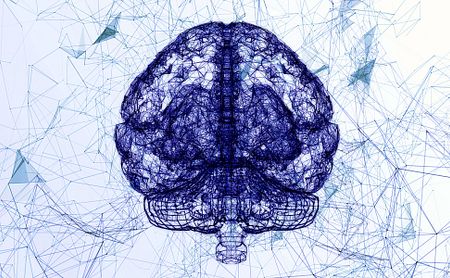Grant Will Fund Study of Breathing Difficulties
Written by |

A $2.1 million grant will fund a study investigating if — and how — cells called astrocytes might affect the irregular breathing associated with Rett syndrome.
Such disordered breathing is associated with a higher mortality rate and scientists remain unsure of how mutations in the MECP2 gene — the main cause of Rett — disrupt breathing.
Daniel Mulkey, PhD, at the University of Connecticut (UConn), and his collaborator Michelle Olsen, PhD, from Virginia Tech Ubniversity, have been studying this topic for some time, according to a press release. The project that the grant — from the National Heart, Lung, and Blood Institute — will support has received continuous funding since 2010, amounting to a total of $5.4 million in federal support.
Past studies have suggested that the brain’s inability to correctly respond to changes in carbon dioxide (CO2) and hydrogen underlies altered breathing in Rett.
A small brain region called retrotrapezoid nucleus (RTN), which sits in the brainstem, acts as a sensor of the ratio between CO2 and hydrogen levels to regulate breathing. Recent work has suggested that astrocytes — often thought of as more of a support cell, despite drawing some interest for a possible role in Rett — contribute to this process in the RTN. Elevated CO2 levels stimulate breathing.
Astrocytes make potassium channels contaning the Kir4.1 and Kir5.1 subunits. Potassium is key for cellular function, helping to mantain the fluid and electrolyte balance of the body.
Kir4.1/5.1 channels are found almost exclusively on astrocytes and enable these cells to react to CO2 and hydrogen.
It remains unclear, however, how astrocytes and Kir4.1/5.1 channels contribute to breathing under normal conditions, and whether disrupting this mechanism affects breathing in disease conditions.
Mulkey and Olsen have shown previously that the loss of MeCP2 protein leads to lower amounts of Kir4.1/5.1 channels and a lesser increase in breathing in response to higher CO2 levels.
Other research showed that astrocytes might regulate neural activity based on proximity. Astrocytes would “snuggle up” to neurons during times of wakefulness and retract during sleep. The distance created between astrocytes and neurons by retraction limits their ability to communicate.
This led Mulkey and Olsen to predict that altered astrocytes’ function in Rett due to the loss of Kir4.1/5.1 channels will have a greater effect on respiratory neurons during wakefulness.
The collaborators plan to use a combination of genetics, cellular electrophysiology, and advanced microscopy to determine how astrocytes and these channels affect sleep-wake dependent breathing problems in Rett.
“This work,” Mulkey said, “will provide novel insight regarding how astrocytes contribute to control of breathing, and in doing so potentially identify new avenues for treatment of disordered breathing in Rett syndrome.”





